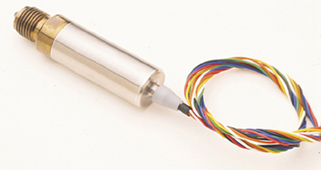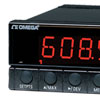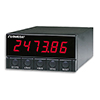SPECIFICATIONS:
@ 25°C ±1°C
Excitation: 10 Vdc
Full Scale Output:
30 mV typical, 26mV minimum
Zero Balance: 0.0mV, +3 mV, -0 mV
Input & Output Resistance: 2000 Ω
minimum, 3000 Ω maximum
Insulation Resistance: 500 megohms
minimum @ 45 Vdc between any
connection and case over the calibrated
temperature range
Sensing Element: 4 active-arm bridge
Gages are sputtered-deposited on the
pressure summing diaphragm
Linearity: ±0.15% FSO maximum
measured best fit straight line through
all data points
Hysteresis: ±0.06% FSO (max) at
constant temperature for a complete
pressure cycle
Long Term Stability: Zero and
sensitivity stability is better than ±0.1%
over a six month period when the
transducer is operated within the
specified environment
Operating Temp Range:
PX3425: -54° to +121°C
(-65° to +250°F)
PX3435: -54° to +177°C
(-65° to +350°F)
Compensated Temp Range:
PX3425: -18° to +121°C (0° to +250°F)
PX3435: -18° to +177°C (0° to +350°F)
Thermal Effects:
(Over the compensated range)
Span: ±0.03% FSO/°F
Zero: ±0.03% FSO/°F
Vibration Sensitivity: At 35g peak
sinusoidal vibration from 10 Hz to 2000
Hz (1/2 ” D.A.) , the output shall not
exceed 0.003% FSO/g
Natural Frequency: >50,000 Hz
Shock: Qualification level of 100g,
11 msec half sine wave without damage
Temperature: Platinum resistance
device to DIN43760 (alpha = 0.00385
½/ohm/°C). See ordering box for
resistance at 0°C (32°F)
Proof Pressure: 1.5 times rated
pressure or 25,000 psi whichever is
less, will not cause the performance to
shift beyond the specified tolerances
Burst Pressure: 2.0 times rated
pressure or 30,000 psi whichever is
less, will not cause rupture of the
pressure containment cavity.
Wetted Parts: 17-4 PH Stainless Steel
Electrical Connection:
7 separate PTFE insulated stranded
wires 25" ± 2" (0.6m ± 0.05m) in length
Pressure Fitting:
9/16 -18 UNF-2A (Mates
with Autoclave F250C or Sno-Trik 44F)
Weight:
4 oz (114g) max including cable
Calibration Record:
OMEGA’s Calibration record is supplied.
Also documented is the pre-ship output
at atmospheric pressure and the
temperature sensor resistance at
25°C ± 2.8°C (77°F ± 5°F)
Options: Special electrical and
pressure connections. Special testing
and calibration procedures. Higher
operating temperatures.
 Fermer
Fermer




